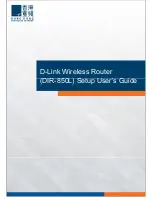
2-8
Cisco Aironet 1520 Series Outdoor Mesh Access Point Hardware Installation Guide
OL-12632-02
Chapter 2 Mounting Instructions
Installation Guidelines
Installation Guidelines
Because the access point is a radio device, it is susceptible to common causes of interference that can
reduce throughput and range. Follow these basic guidelines to ensure the best possible performance:
•
For information on planning and initially configuring your Cisco Mesh network, refer to the
Deployment Guide: Cisco Mesh Networking Solution.
•
Perform a site survey before beginning the installation.
•
Install the access point in an area where structures, trees, or hills do not obstruct radio signals to and
from the access point.
•
The access points can be installed at any height, but best throughput is achieved when all the access
points are mounted at the same height. We recommends installing the access points no higher than
40 feet to allow support for wireless clients on the ground.
Note
To calculate path loss and to determine how far apart to install access points, consult an RF planning
expert.
Site Surveys
Every network application is a unique installation. Before installing multiple access points, you should
perform a site survey to determine the optimum use of networking components and to maximize range,
coverage, and network performance.
Consider the following operating and environmental conditions when performing a site survey:
•
Data rates—Sensitivity and range are inversely proportional to data bit rates. The maximum radio
range is achieved at the lowest workable data rate. A decrease in receiver sensitivity occurs as the
radio data increases.
•
Antenna type and placement—Proper antenna configuration is a critical factor in maximizing radio
range. As a general rule, range increases in proportion to antenna height. However, do not place the
antenna higher than necessary, because the extra height also increases potential interference from
other unlicensed radio systems and decreases the wireless coverage from the ground.
•
Physical environment—Clear or open areas provide better radio range than closed or filled areas.
•
Obstructions—Physical obstructions such as buildings, trees, or hills can hinder performance of
wireless devices. Avoid locating the devices in a location where there is an obstruction between the
sending and receiving antennas.
















































